Bitcoin price today: falls to 2-week low below $113k ahead of Fed Jackson Hole
Introduction & Market Context
AutoZone Inc (NYSE:AZO) presented its third quarter fiscal 2025 earnings results on May 27, 2025, revealing a mixed performance characterized by solid revenue growth but declining profitability metrics. The company’s stock fell 3.87% following the announcement, closing at $3,678.39, as investors reacted to the earnings miss despite the revenue beat.
The automotive parts retailer continues to execute its growth strategy across three key priorities: U.S. retail (DIY), U.S. commercial (DIFM), and international markets. While the company demonstrated strength in its commercial business and store expansion initiatives, margin pressures and foreign exchange headwinds impacted bottom-line results.
Quarterly Performance Highlights
AutoZone reported net sales of $4.46 billion for the third quarter, representing a 5.4% increase compared to the same period last year. This growth was driven by a 5.4% increase in total company same-store sales, with domestic same-store sales rising 5.0% and international same-store sales growing 8.1% on a constant currency basis.
Despite the revenue growth, the company’s profitability metrics declined year-over-year. Gross margin contracted by 77 basis points to 52.7%, while the operating expense ratio increased by 108 basis points to 33.3%. These factors contributed to a 3.8% decrease in operating profit to $866 million and a 185 basis point reduction in operating margin to 19.4%.
As shown in the following financial highlights table:
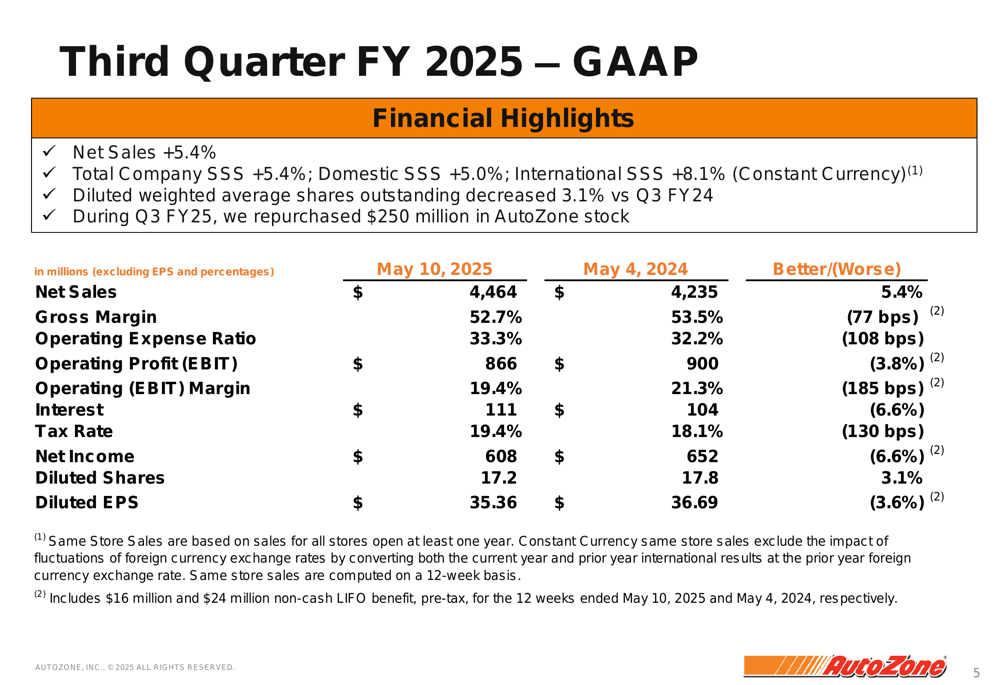
Diluted earnings per share came in at $35.36, representing a 3.6% decrease from the prior year and falling short of analyst expectations of $37.10. According to the earnings call transcript, this miss was primarily attributed to a $1.1 impact from foreign exchange headwinds, which wasn’t explicitly mentioned in the presentation slides.
Year-to-date performance showed similar trends, with net sales up 3.3% to $12.7 billion and diluted EPS down 2.0% to $96.17 for the 36 weeks ended May 10, 2025.
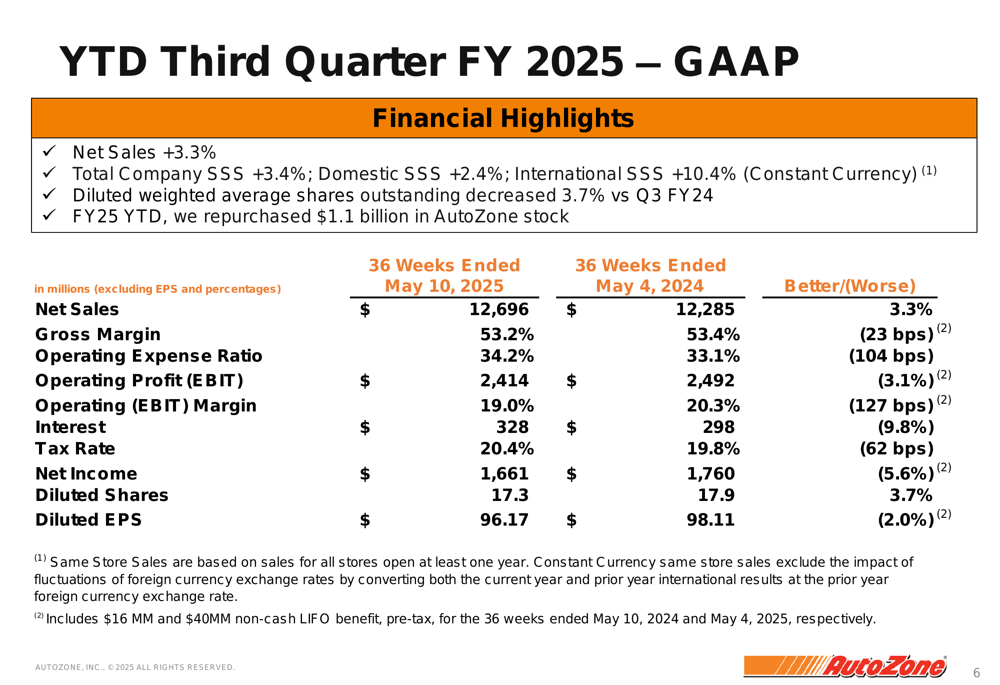
Commercial Business Growth
A bright spot in AutoZone’s quarterly performance was its commercial business, which demonstrated accelerating growth. Commercial sales increased by 10.7% to $1.27 billion in the third quarter, outpacing the company’s overall growth rate. On a trailing four-quarter basis, commercial sales grew 8.3% to $5.11 billion.
The company continues to expand its commercial programs, which are now present in 92% of domestic stores. AutoZone reported 6,011 total domestic commercial programs, representing a 2.9% increase year-over-year. Average weekly sales per program also improved, rising 7.9% to $17,700.
As illustrated in the commercial highlights:
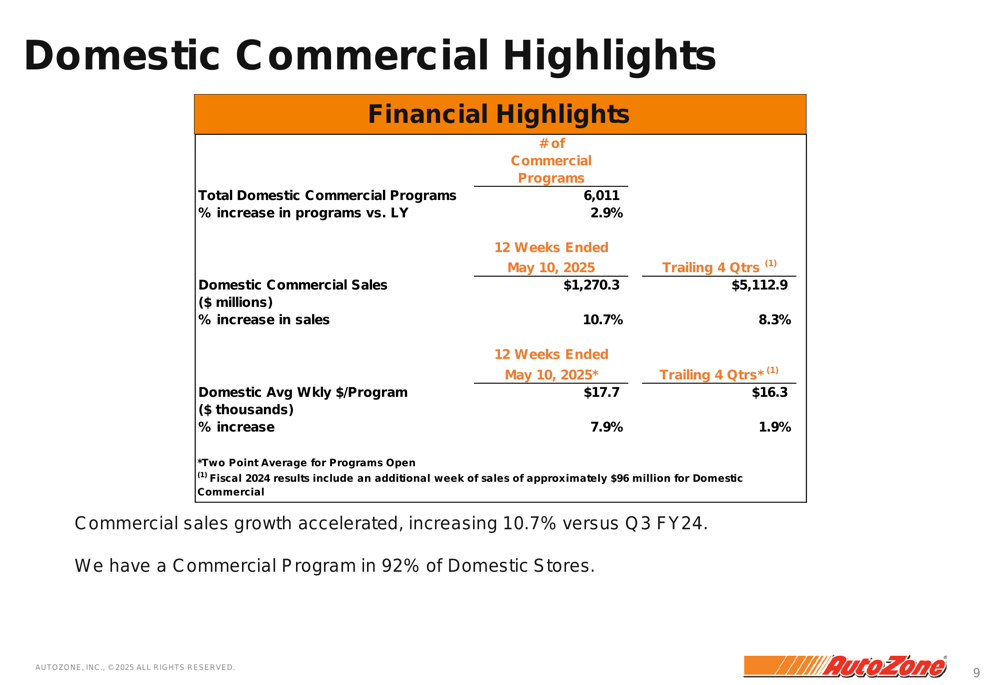
During the earnings call, CEO Phil Danielle emphasized the growth potential in the commercial segment, noting that AutoZone currently holds only a 5% market share in this space, suggesting significant room for expansion.
Store Expansion Strategy
AutoZone significantly accelerated its store opening pace during the third quarter, with total company store openings increasing by 87% compared to the same period last year. The company opened 84 new stores in Q3 FY2025 (54 domestic, 25 in Mexico, and 5 in Brazil), compared to 45 in Q3 FY2024.
The presentation highlighted that domestic store openings increased by 69% and international store openings grew by 131% compared to the prior year’s third quarter. This aggressive expansion strategy aligns with the company’s focus on growth in both domestic and international markets.
The following table details the company’s store expansion:
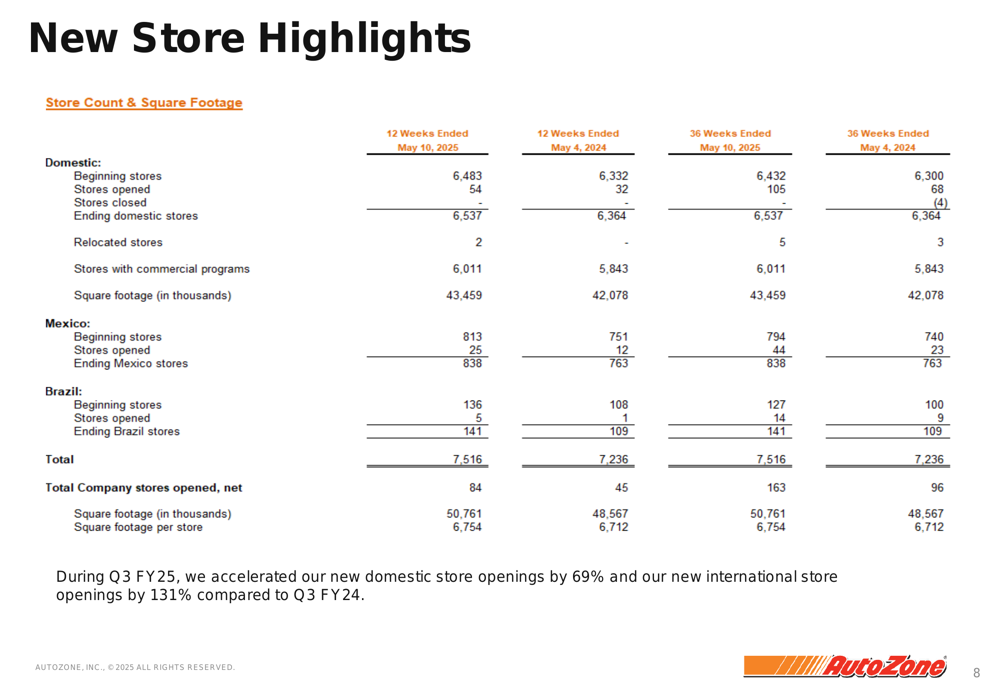
As of May 10, 2025, AutoZone operated a total of 7,516 stores, including 6,537 domestic locations, 838 in Mexico, and 141 in Brazil. Year-to-date, the company has opened 163 new stores, representing a 70% increase from the 96 stores opened during the same period last year.
Balance Sheet and Capital Allocation
AutoZone’s balance sheet reflects its inventory investments and capital allocation priorities. Inventory increased by 10.8% year-over-year to $6.82 billion, with inventory per store rising 6.7% to $908,000. This inventory build-up supports the company’s expansion initiatives and efforts to improve parts availability.
The company continued its share repurchase program, buying back $250 million worth of stock during the third quarter and $1.1 billion year-to-date. Diluted weighted average shares outstanding decreased by 3.1% compared to Q3 FY2024, reflecting the impact of these repurchases.
Capital expenditures remained significant, with property and equipment, net, increasing by 11.2% to $6.73 billion. The company’s debt level decreased slightly by 1.6% to $8.85 billion, while the stockholders’ deficit improved by 17.9% to $3.97 billion.
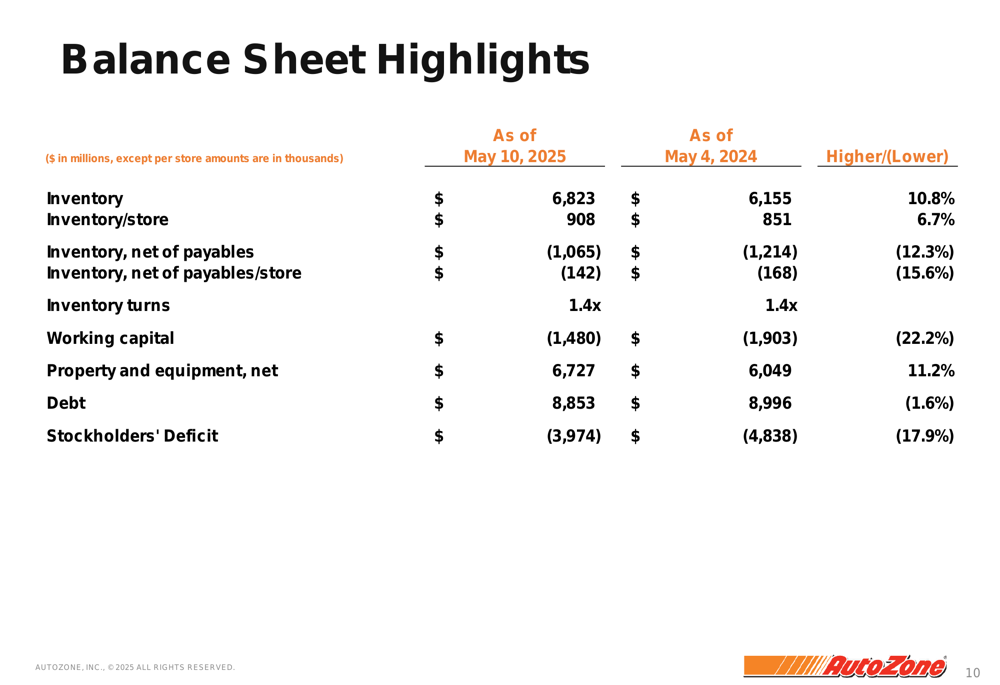
Strategic Initiatives and Outlook
AutoZone outlined its approach to building shareholder value through several strategic initiatives. These include optimizing performance of existing assets, driving growth in both domestic and international markets, returning excess cash to shareholders, and maintaining a relentless focus on execution.
The company is particularly focused on expanding its hub and mega-hub network, improving assortment and coverage, and leveraging technology to enhance customer experience and operational efficiency.
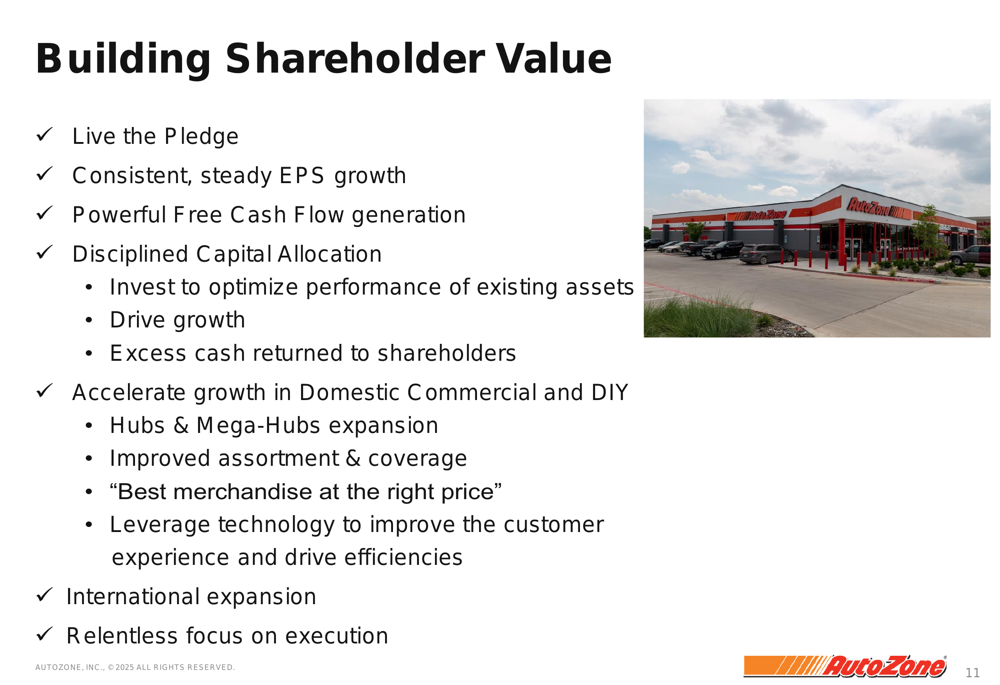
Looking ahead, AutoZone anticipates continued solid trends in the fourth quarter, with expectations for similar top-line momentum as seen in the third quarter. However, gross margins are expected to be slightly down in the upcoming quarter, suggesting ongoing profitability challenges.
CFO Jamere Jackson emphasized during the earnings call that the company is "investing in a disciplined way to drive the kind of growth that we’re seeing," while CEO Phil Danielle expressed optimism, stating, "We believe AutoZone’s best days are ahead of us."
Despite the mixed quarterly results and near-term challenges, AutoZone remains committed to its long-term growth strategy, with particular emphasis on expanding its commercial business and international presence while continuing to return value to shareholders through stock repurchases.
Full presentation:
This article was generated with the support of AI and reviewed by an editor. For more information see our T&C.
